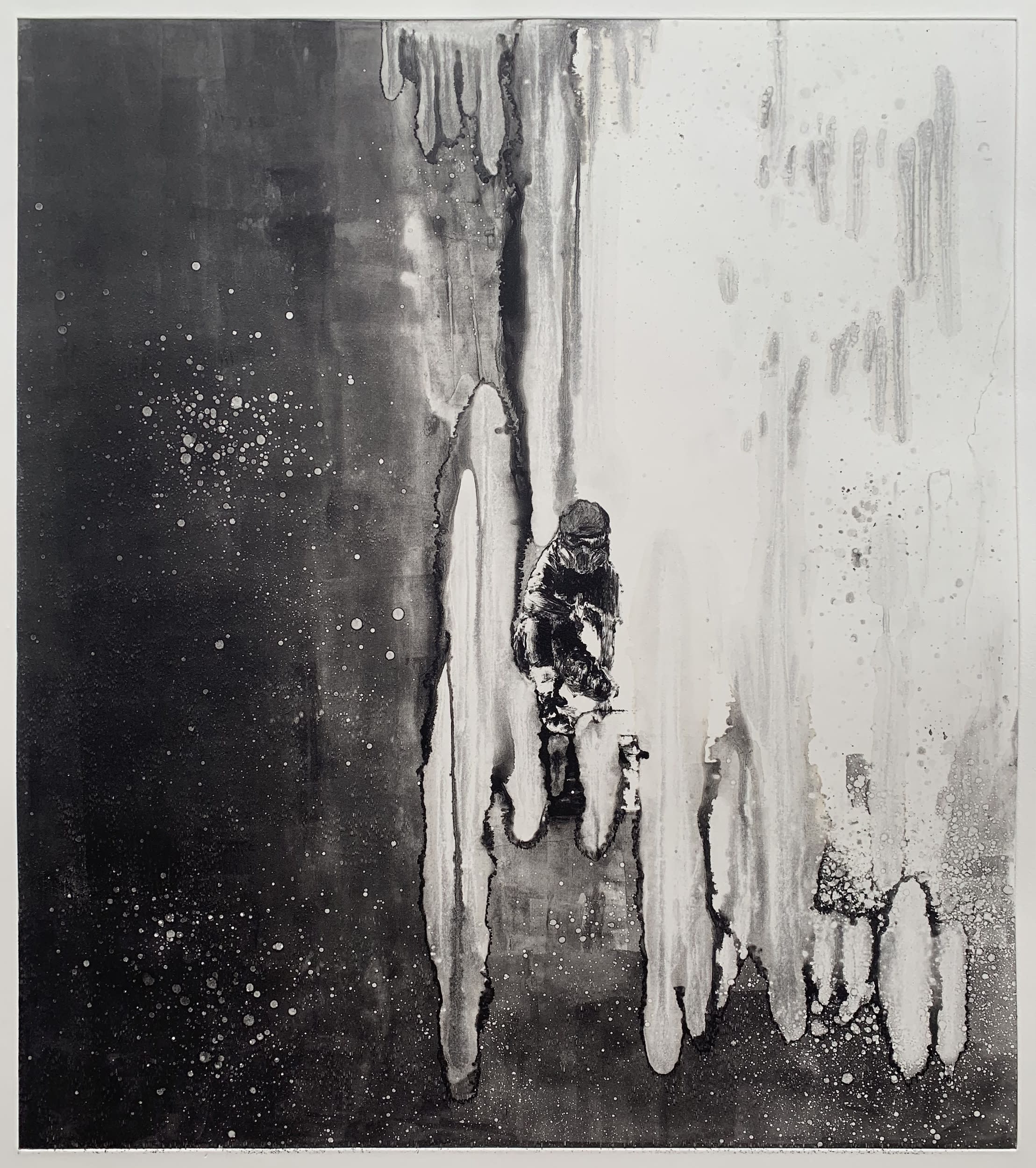The Royal Society of Painter-Printmakers held their annual elections in April 2021. We are so excited to welcome a record number of new Associate Members (a whopping 19 brilliant artists) - and can't wait to see more of their work up on the walls of Bankside Gallery.
Raphael Appignanesi ARE
Raphael's work is figurative and symbolistic, encompassing themes of mythology, esotericism and landscape both natural and urban. He is primarily concerned with the physical development and refinement of my monochrome mark-making to work synergistically with his inner visions and personal aesthetic, as well as building on and exploring the interplay of light and dark.
Raphael Appignanesi graduated with a First-Class Honours BA in Illustration (awarded Best Student in Narration and Illustration) from Sir John Cass, Metropolitan University, London (2013) and gained an MA in Printmaking from the Royal College of Art (2018).
He has worked at home and abroad as studio assistant to internationally renowned artists.
In 2018 he was awarded the Gwen May Recent Graduate Award and so has been exhibiting with the RE as a Student Member before his election an Associate Member in 2021.
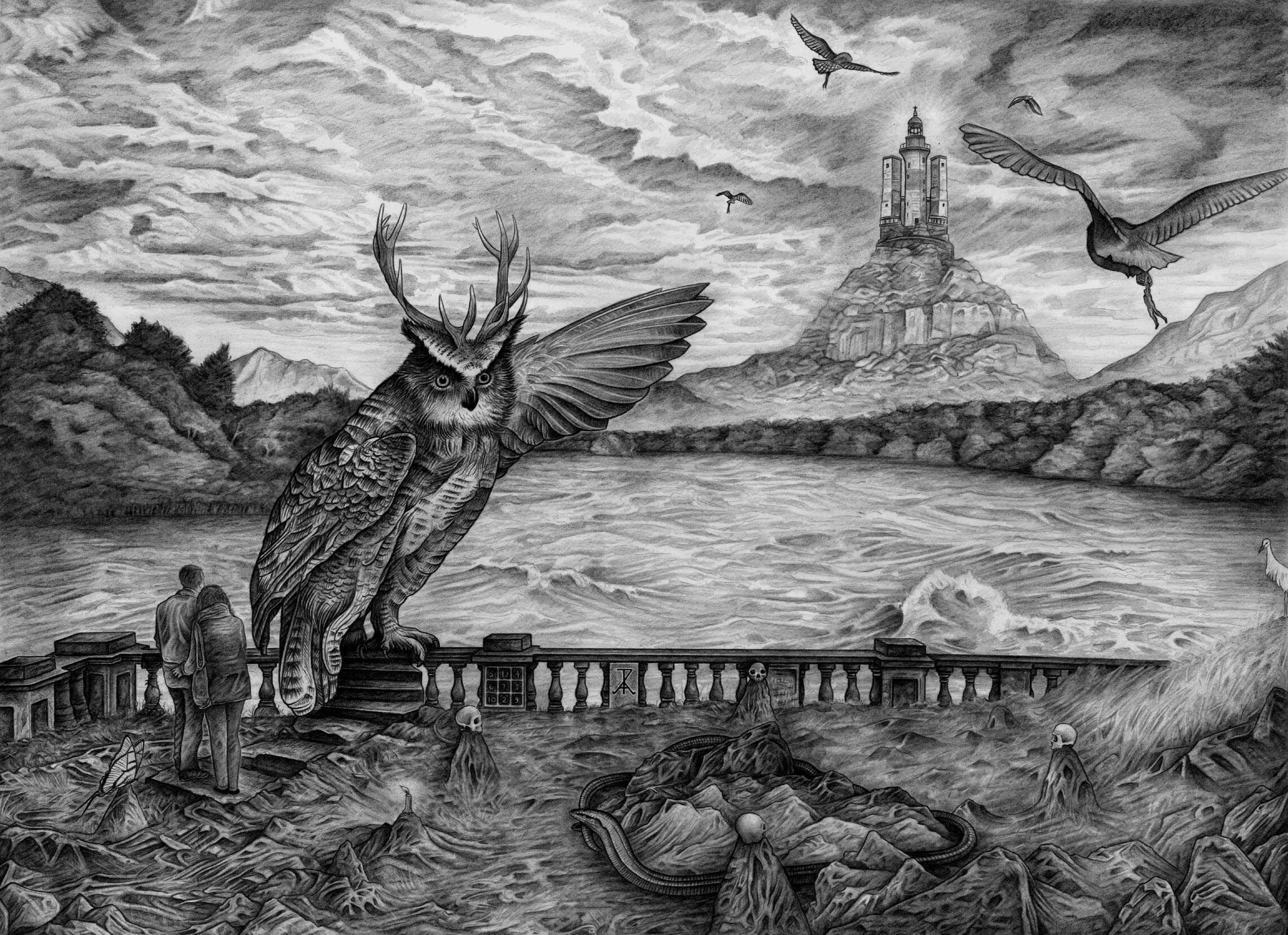
Denise Ballard Wyllie ARE
Denise Ballard Wyllie’s medative and sombre English landscape prints have now burst into colourful flowerings. She makes five of each edition, varying the hand drawn print stencils for different moods. She is mesmerised by nature’s unrestrained abundance.
Denise’s focus is consistently landscape printmaking with forays into projects such as a monumental Science-Art project, a 2 year residency at a Cancer Research UK laboratory culminating in several artworks including a 42 meter screenprinted science research (DNA) artwork that hangs in The Royal Mint, and a 20m piece in which she championed cancer advocacy groups in the USA and UK.
Denise has project-managed and led mixed-funded urban outreach with multi-ethnic/ multi-religions groups in London, taught in print workshops, computer graphics studios and lectured in art history, photography and life drawing.
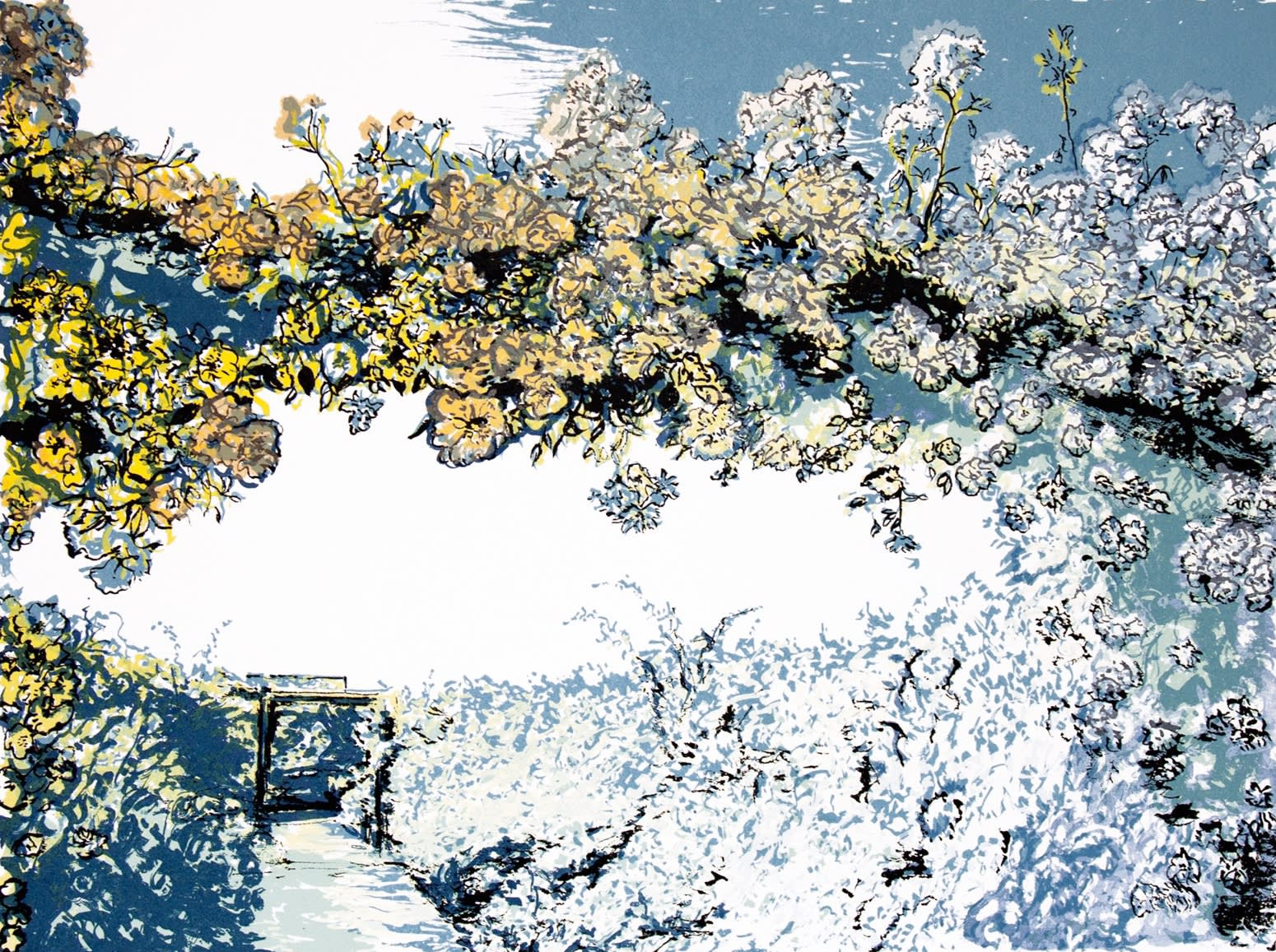
Ian Brown ARE
Ian Brown's 'News from The Critical Zone' is a series of photopolymer etchings which evolved from his research on a previous set of 8 screenprints 'The Seven Seas'. The damage he witnessed on that project led him to research species loss in the UK and this new series of etchings is the outcome.
The French philosopher Bruno Latour describes 'the critical zone" as a space just a few kilometres deep - above and below the surface of the Earth where all discovered life in the universe exists. By collapsing the infinite cosmology opened up by Galileo in this way Latour is telling us we can not endlessly extract resources and discard our waste. We must maintain what we have because it is finite, it's local and it's at risk
This series of 8 etchings explores the fragility of this situation through images connected to climate change and species loss. The map of the Knepp Estate featured twice provides a small note of optimism.

Meg Buick ARE
Meg’s work represents an observed and intuited response to the natural world, drawing on motifs from both western and eastern painting traditions. The figures in her work appear to be in motion and often appear with haloes. They are frequently juxtaposed with animals – horses, birds, camels, among others, and a feeling of the ancient connection between the human and animal worlds is explored. Sometimes the figures are travelling, in groups or alone, evoking the ancient themes of pilgrimage and migration. As well as painters of the Italian Renaissance such as Giotto and Piero della Francesca, her work draws on the imagery of Medieval Chinese, Mongolian and Persian Painting – Zhao Meng Fu, Bei, and paintings of the Liao and Song Dynasty.
Meg believes that drawing is at the core of her practice – her images all emerge from drawing. Working from life, memory, and imagination, she continually reworks her images, building up a history of marks which contain within them the trace of the struggle to render on paper something seen in the mind's eye. As a Printmaker, Meg works mostly with lithography, drawn by its potential to capture the texture and gesture of the drawn and painted mark. After selecting a drawing to develop into a lithograph, she works with lithography crayon directly onto grained plate, which is then exposed. She enjoys the way the process itself changes the drawings, making them richer, bolder, and often opening up the possibility for layers of colour. These are painted in tusche wash and added as a separate plate. Through the drawing and lithography process the subject matter is revealed – a print is never a direct reproduction of the drawing, but a response to it.
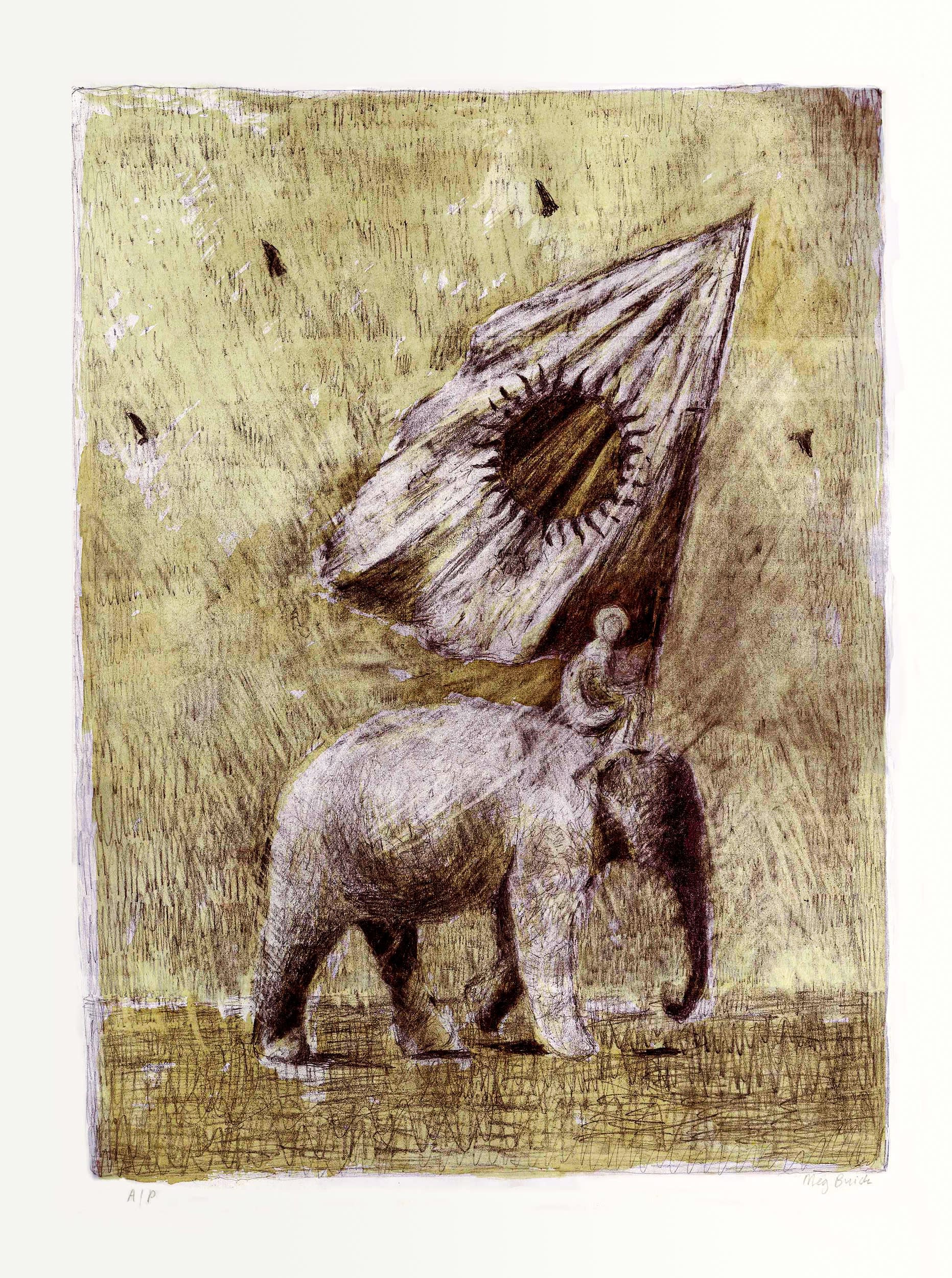
Austin Cole ARE
Austin considers himself to be a landscape artist, both the urban and rural. His travels to different countries have given him the opportunity to acquire source material for his work. Always fascinated by the urban landscape of the city; the fire escapes of the brownstone buildings in New York, the fish market in Tokyo, the mixture of the old and new, he tries to convey a sense of place.
He was born in South Wales, and his printmaking career began during his foundation year at Dyfed College of Art. He then moved to London in 1980, and continued with printmaking part time at Morley College, the City Lit, Putney School of Art and classes at the Slade School of Art while working full time in the Civil Service. In 2017, he took early retirement in order to concentrate on my print career full time.

Richenda Court ARE
Richenda's work is figurative, lyrical and dream-like, forged through daily line drawing and mark making. Richenda uses the process of drawing as a method to think through ideas and bring imagined visions to the surface. These subconscious thoughts and feelings reveal her experiences of the world, and this is the foundation of the imagery in her prints.
Her preferred printmaking mediums are linocut and etching, with the fineries of line and freedom of pattern making. In her most recent works she uses etching and linocut printed as one print. This is a process both technically and physically challenging to master, and one she was first introduced to by Simon Lawson of Huguenot Editions.
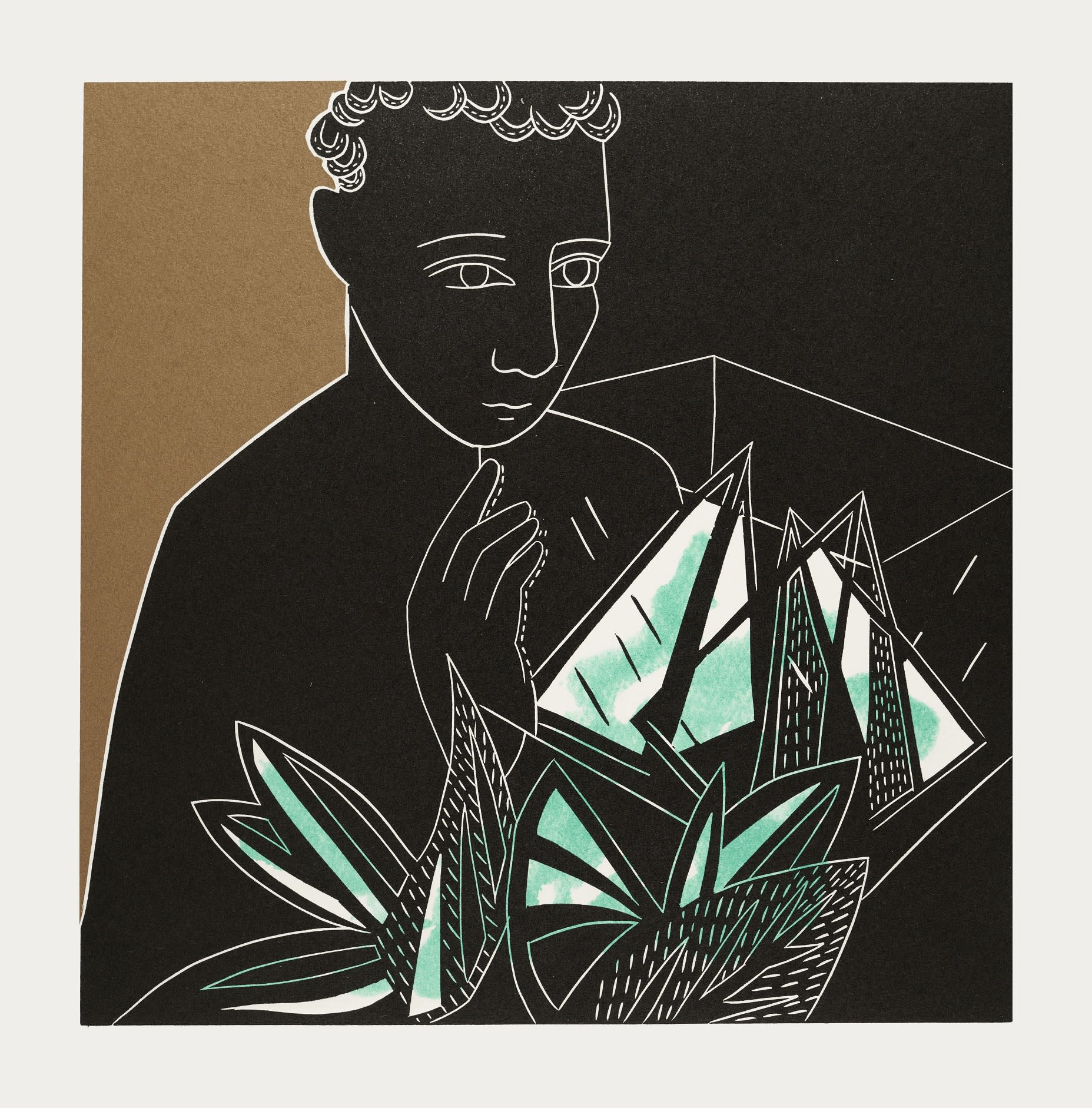
Danielle Creenaune ARE
The central motivation in Danielle's work is the intrinsic dialogue between landscape and people, how landscape is perceived through our library of pre-lived experiences and the ways in which this is reflected through the visual language of gesture. Recent works describe a parallel notion of fragility with respect to the state of our current natural environment and the artist's own personal experience during a period of relocating to Australia after almost two decades abroad.
Danielle works in the techniques of stone lithography and Mokulito (lithography on wood), because there is a flow between the process, materials and image making. She walks and observes places while making quick sketches that later serve to situate herself back there with the movement, sounds and sensibilities. Back in the studio, she works on the matrix of stone or wood in a visceral manner creating a new landscape which taps into the feeling of being in that place.
Danielle was born in Australia, then lived abroad for the last 18 years but returned to Australia in 2019. She spent 5 years in London working for John Purcell Paper from 2001-2006,and during her 12 years in Barcelona, Spain, she set up her own print studio and undertook several artist residencies and delivered yearly summer printmaking workshops at the Centre D’Art i Natura in Farrera.

Grainne Cuffe ARE
Celebrating the intense sensuality witnessed in her garden, Grainne's work captures her awe and admiration of a moment in the continuum of nature, articulating the raw energy and grace of a flower’s fragile and transient existence. The sense of being balanced and at ease are essential elements. Absorbing gardening heritage as a way of life, it is the strongest influence in her work .
Her etchings echo nature’s intensity of colour with a series of aquatints. Colour intensity stretches out to a delicate fade, (the finest, lightest of printable aquatints). The holding of light is the main function of a petal; the articulation of light the essence of etching. Compositionally, balance and harmony, calmness and exuberance are equal partners.

Karen Daye Hutchinson ARE
Karen says she works on multi levels; as a mark maker, a story teller and a silent activist. Her print works explore myth and truth in a personal response to understanding the difference. She reinterprets that which already exists and explore and offer fragments of her own identity within it.
Incorporating book art and sculpture; her work reflects an interest in habitat, architecture and literature. She uses line and colour as a language to explore the parameters of printmaking, with symbolism as an allegory; deconstructing situations, fairy tales, nursery rhymes or poetry that are part of childhood and adult culture.
Karen is a full time printmaker working from her own print studio in an old mill in the heart of Belfast. She is also a member, and former director/trustee of Belfast Print Workshop.

Jonathan Gibbs ARE
Jonathan learnt various printmaking methods as an undergraduate at the Central School. However, it was his interest in sculpture that led to wood engraving. After art school he began to cut and engrave wood blocks for printmaking. Following the Cheltenham Painting Fellowship, he began to exhibit drawings and paintings, and eventually wood engravings. This way of working introduced a more pictorial strand of image-making, which remains the case to this day. He continues to make abstract work on a larger scale, in contrast to smaller monochromatic prints. These images are sometimes imaginative, figurative and representational, in relation to abstraction. His printmaking is also inspired by pattern and the graphic arts. He works to commission, for books, magazines, writers, designers, and publishers, however, many of his prints are created for their own sake, in the studio.
Recently, he has been using oak panels and Baltic Pine; pieces of reclaimed shelving from the Advocate’s Library in Edinburgh.
Jonathan was a full-time lecturer for many years, and continues as a visiting artist, and external examiner. An event that he feels changed his life was meeting Jim Ede in Cambridge on a school trip in 1971, Ede’s presence, Savage Messiah and Kettles Yard combined as highly significant influences with subsequent connections that have informed his work.
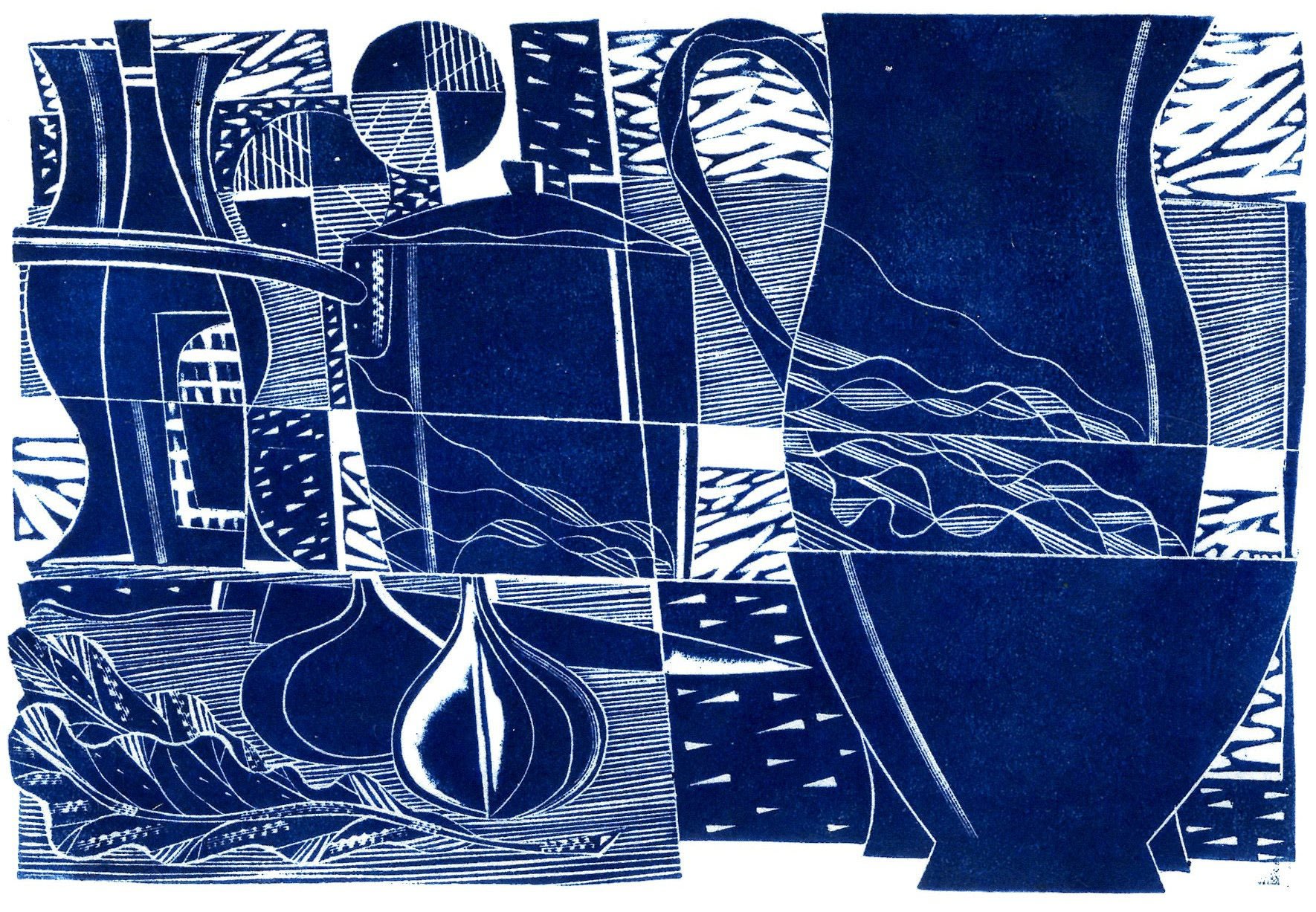
Sarah Granville ARE
Sarah Granville's background is largely based in architecture. Drawing has been central to her practice as a means to note observations, record thoughts and to convey information. Light, form and composition are key to her work.
She studied printmaking at Kensington and Chelsea College (now Morley College) whilst running her architectural practice, intrigued by the possibilities of refining drawings and sketches through stages and by layering, and by the joy of the process.
Most of her work starts 'en plein air', and is developed either in printmaking or in painting.
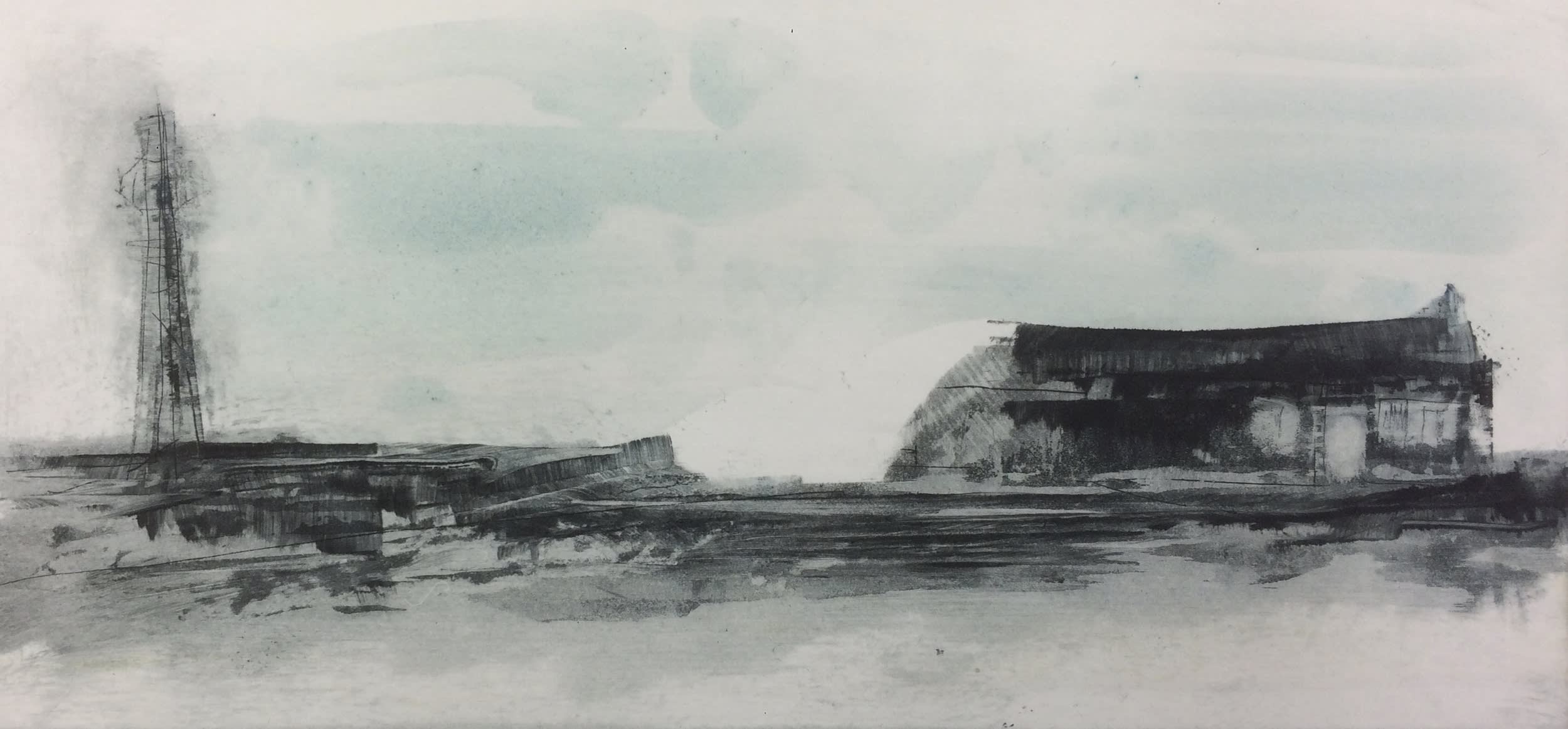
Oona Hyland ARE
Oona's work focuses on the extinction or the nearing extinct. Among the associated consequences, extinction places species literally and metaphorically out of sight. The experience of barriers and boundaries, physical, visual and emblematic, and the asymmetries of experience reflected in her work, are part of the fascination with that which is out of sight, but which remains potent in the memory and the imagination.
Recent works include research and print/sculpture installation at Space Bom Suwon Museum of Contemporary Art Korea and new works for a commissioned work for Trinity College Dublin on the theme of Myrmecophytism (plants and animals or insects symbiotic relationships).
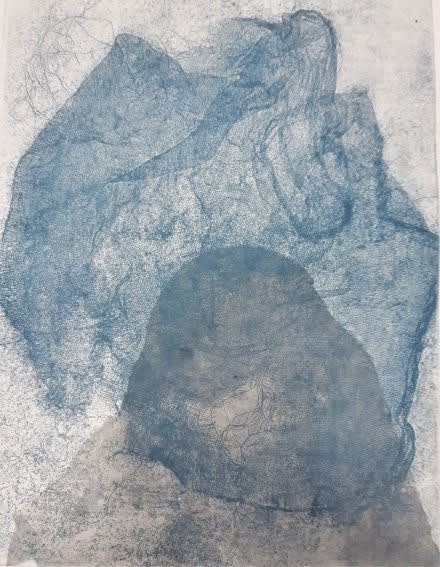
Martin Mitchell ARE
Martin Mitchell's work is influenced by a love of landscape and an interest in the natural environment. He begins his work by physically being in the landscape producing lots of location drawing and taking photos, returning to the same place at different times of day and year, to see the changes of weather conditions and seasons. The work is deeply observed with a quiet melancholy.
He moved to Norwich in 1989 and set up an etching studio. Experimenting with hard & soft grounds, open & spit bites and lift grounds, to produce loose, fluid, expressive landscape etching.
In 1995 he founded the Norwich Print fair, partly to help raise awareness of fine art printmaking among the public and to create opportunities for other printmakers to show their work. The annual Print fair is now a popular event in the cultural calendar of Norfolk.

Niall Naessens ARE
Niall's work focuses on light and space in landscape. He constructs images in a deliberate and pedantic way with the composition and mark-making thought out. He uses rules, stencils and formal hatching. His work displays an untraditional approach to landscapes, hiding things behind distractions interference and motifs.
Niall's images have a sense of the familiar yet are not real, it is more a magic realism. He see's his images as events; a gust of wind or an artist observing dawn. Although he lives in a remote and beautiful landscape, the idea of merely recording this holds no interest. The sentiment in his work is about the physical nature of being in a place.
A full time printmaker since 1990, Niall learned how to etch from James McCreary ARE at Graphic Studio Dublin and spent 14 years working there editioning prints and running etching classes for beginners and professional artists. He was a director there between 2001 and 2006 and was involved in the creation of many projects including Art into Art, National Gallery of Ireland and Holy Show, Chester Beatty Library. He set up Cló Cill Rialaig a print workshop for the artists retreat at Cill Rialaig, Ballinskelligs in 2007.
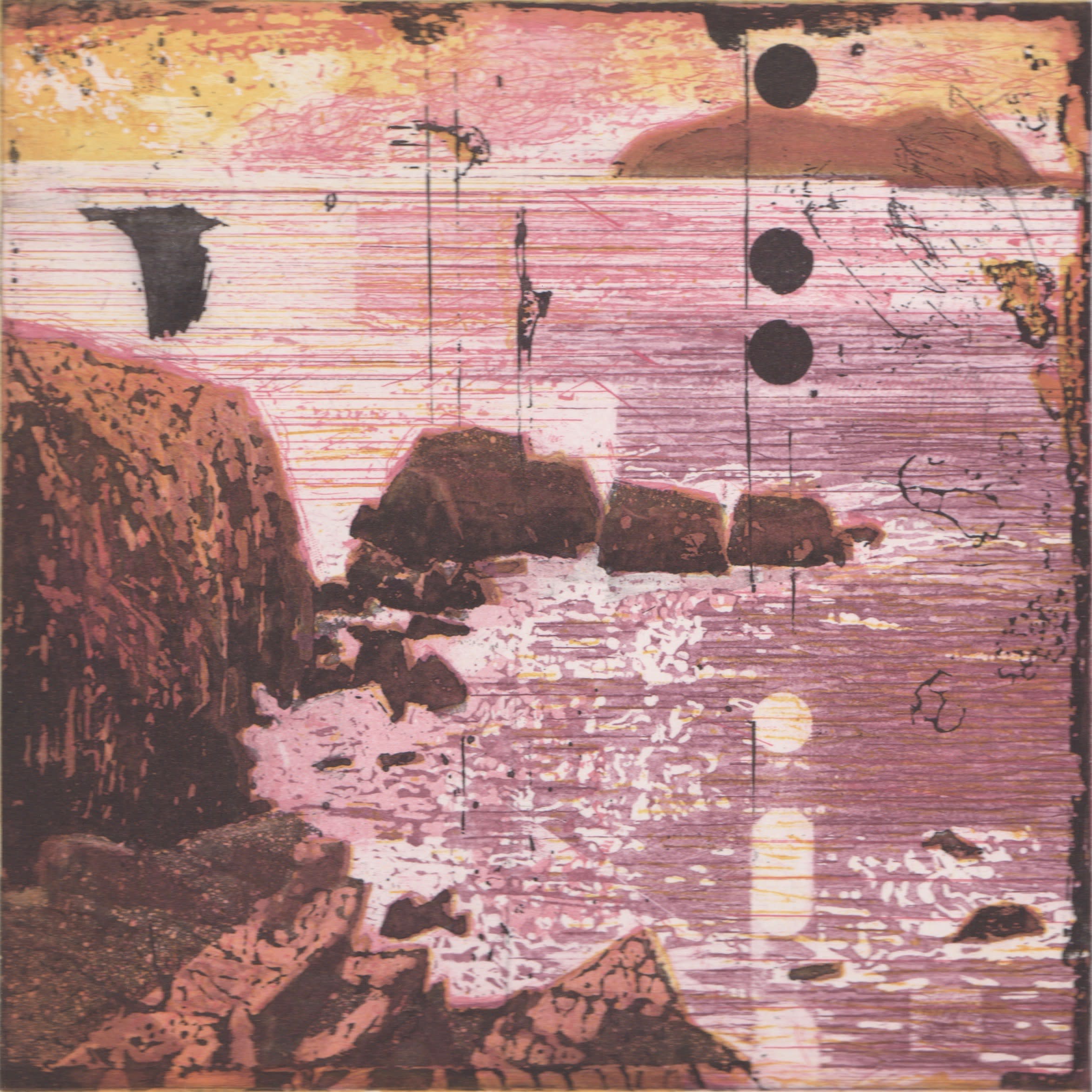
Howard Phipps ARE
Although Howard's wood engravings are relatively small in scale, he initially likes to work first on large scale drawings or water colours that he makes on location. Much of his current subject matter is rooted in the chalk downland landscape of Wiltshire and Dorset close to where he lives. He is fascinated by the ancient trackways and striking hill forms, and the idea that these are timeless places on which earlier generations have left their mark.
Howard uses light to reveal the underlying sculptural nature of the landscape, and for him, the great attraction of wood engraving is its unique white line character on a black ground, where one can somehow intensify the effects first observed when drawing.
Howard has a long standing collaboration with Fine Press publishers The Whittington Press, who have published two visual collections of his wood engravings and linocuts.
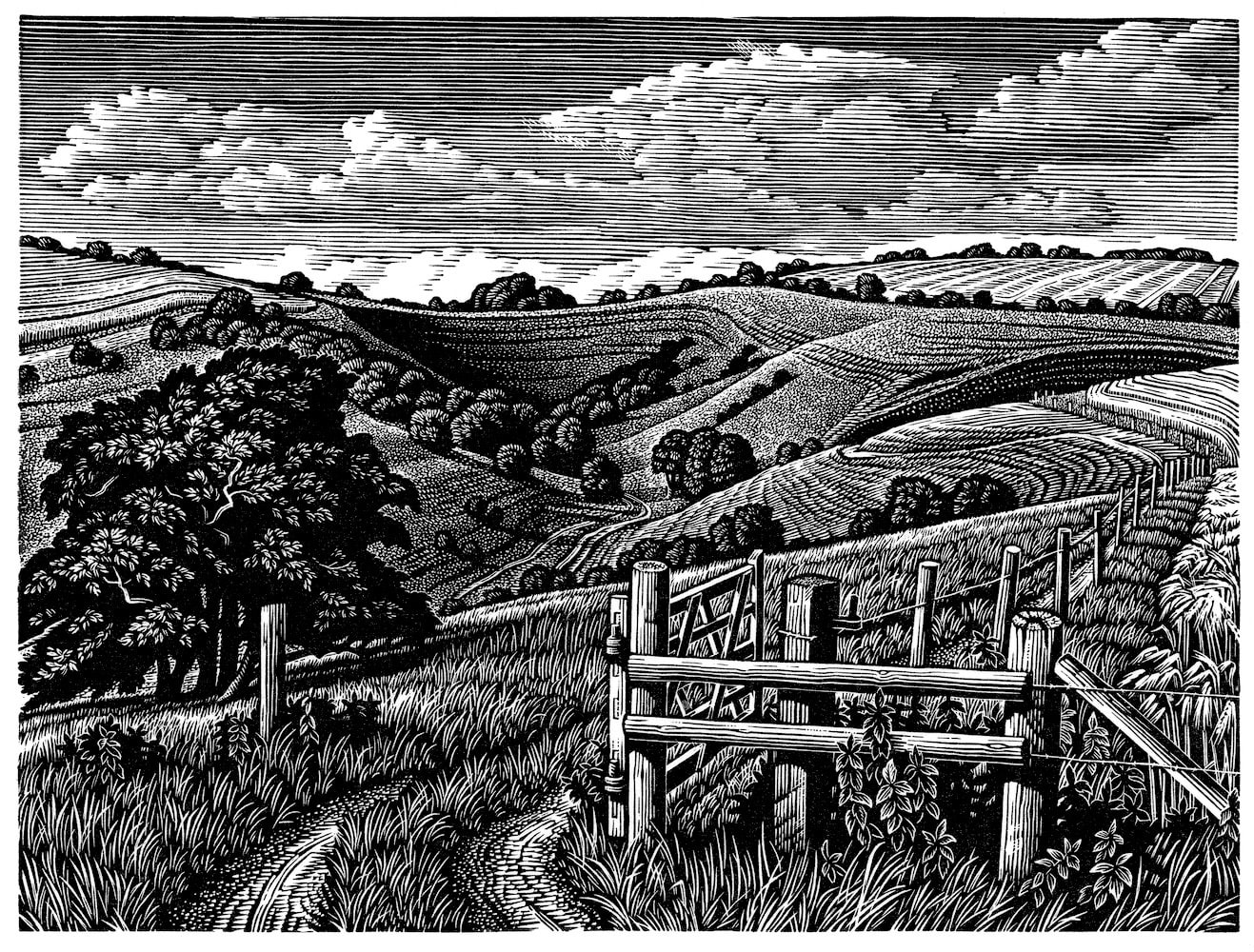
Serena Smith ARE
Serena works primarily with stone lithography to produce small editions of prints, and artist books. All works are drawn, printed, bound and published by herself. Technically informed by the historic uses of lithography in both commercial, and visual art contexts, she frequently combines digitally manipulated imagery, transferred information, autographic drawing, letterpress, and hand colouring. Outcomes from these processes, shaped by systematic constraints and serendipity, knowingly play with a lyrical ambiguity that exceeds the structures of communication. A concern with language, acts of inscription, and technology, that emanates from the stone lithography practice, is the focus for her ongoing doctoral research at Loughborough University.
Serena trained as a studio lithographer between 1985-97 at Curwen Studio. Following on from this she became part of the tutor team at Curwen Print Study Centre, which shifted the emphasis of her collaborative role from print production for professional artists, to working with artists and learners of all ages and levels of interest. In relocating, and joining the studio team at Leicester Print Workshop, this teaching role has continued.
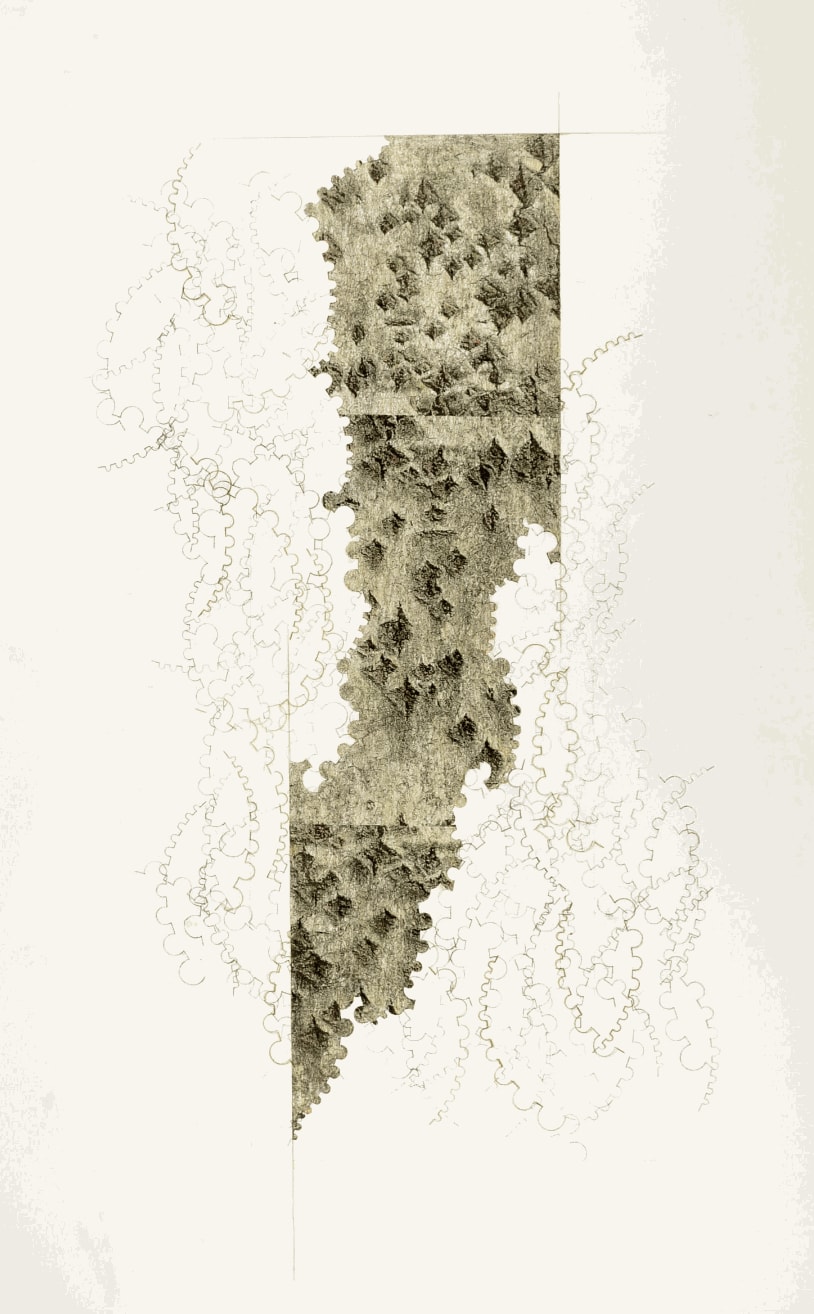
David Sully ARE
David Sully was a student at the Royal Academy Schools under the teaching of Peter Freeth RA RE. Subsequently, he was employed to edition prints for artists at the 107 Workshop in Wiltshire, and worked for five years plate making and editioning intaglio prints.
He aims to make both drypoint and aquatint prints with the same spontaneity as his sketchbook drawings. For a number of years he has carried out the ritual of making small, relatively quick drawings in either pencil or ink wash in small sketchbooks. There is a temporal aspect of a day-to-day diary. The drawings are made at a pace and involve direct one-go decisions. These drawings evidence the way the seasons overlap, the linear architecture of the trees in winter and their transformation in the spring and autumn.
Drypoint or etching plates may be started or completed entirely on location with the aim of carrying the spontaneity within the sketchbooks onto the plate. David is interested in how a gestural flourish can be allied to the internal rhythm of the drawing, and how the quality of each chosen print medium can add subtlety.
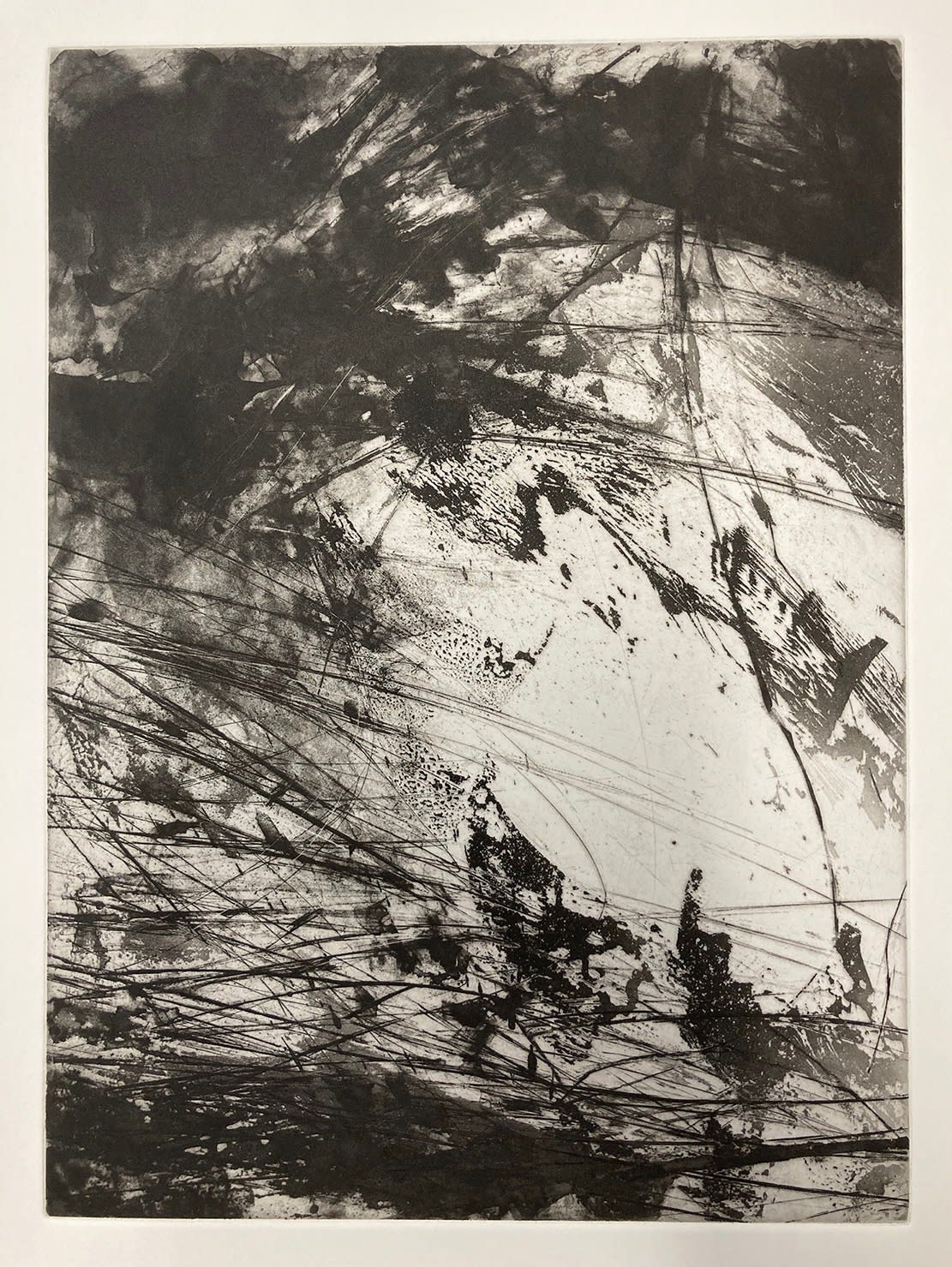
Carol Wilhide Justin ARE
Carol Wilhide Justin is an artist-printmaker who specialises in Japanese woodcut.
Time-consuming to produce, woodcuts are built up in a slow, exacting process, one layer at a time. In a world increasingly driven by the digital, Carol’s work celebrates the abiding value of the haptic and analogue.
Carol derives her inspiration from the natural world, the interplay of light and shade, and the mutability of time, movement, and memory. While the starting point for a print may be one of her own drawings or digital photographs, translating the image into a woodcut involves a deliberate and decisive reinterpretation of the subject, so that it is transformed in an atmospheric and emotional way, one that embodies the passage of time. This is reflected in her subdued choice of colour.
Carol teaches Japanese Woodcut her main art practice, at Morley College and City Lit, but also Bookbinding , Lino and Woodcut and printing onto textiles to BA students and adult learners at the Art Academy.

Wai Wong ARE
An unexpected encounter with etching urged Wai Wong to pause his career in filmmaking and advertisement production, and he took a detour to study printmaking. After his MA training in Middlesex University, he further confirmed his passion in printmaking.
Wai was awarded The Gwen May Recent Graduate Award in 2018 and elected an Associate Member of the RE in 2021.
"I will say that I want to be a printmaker instead of an artist. More precisely, I want to be a craftsman or an artisan focusing on making prints. Ozu Yasujiro is my favourite movie director, and probably my favourite artist. In an interview, he once said, “I only know how to make tofu. I can make fried tofu, boiled tofu, stuffed tofu. Cutlets and other fancy stuff, that’s for other directors.” Because he spent his entire career to make nothing else but 'tofu' he made the best 'tofu'. Ozu probably did not consider himself as an artist, but a craftsman who repeatedly practice the same craft until he reached the perfection. This is what I want to be - a Tofu maker; a craftsman in printmaking. Except practicing the same craft repetitively and constantly, I do not know there is any other way to achieve perfection."
